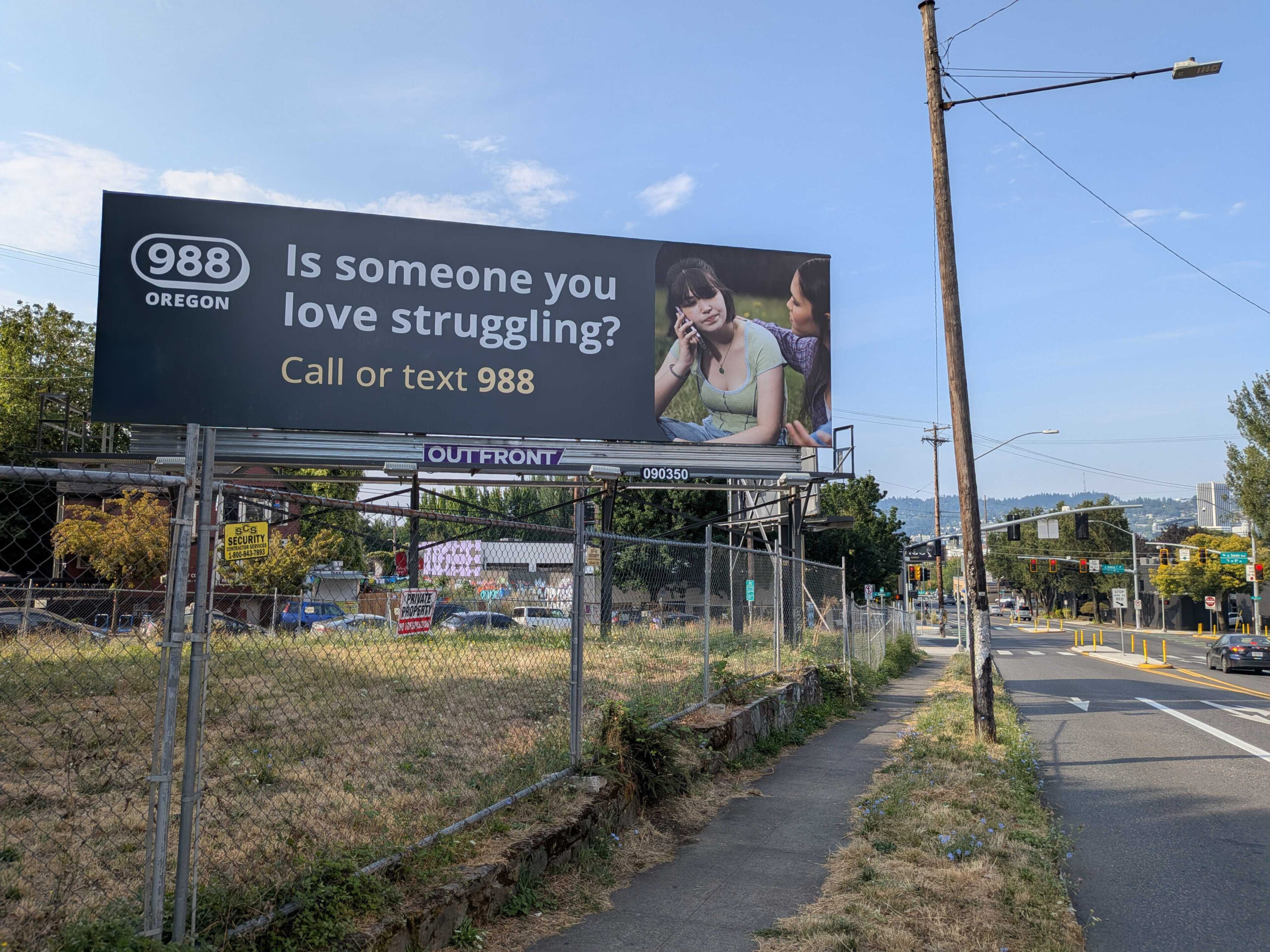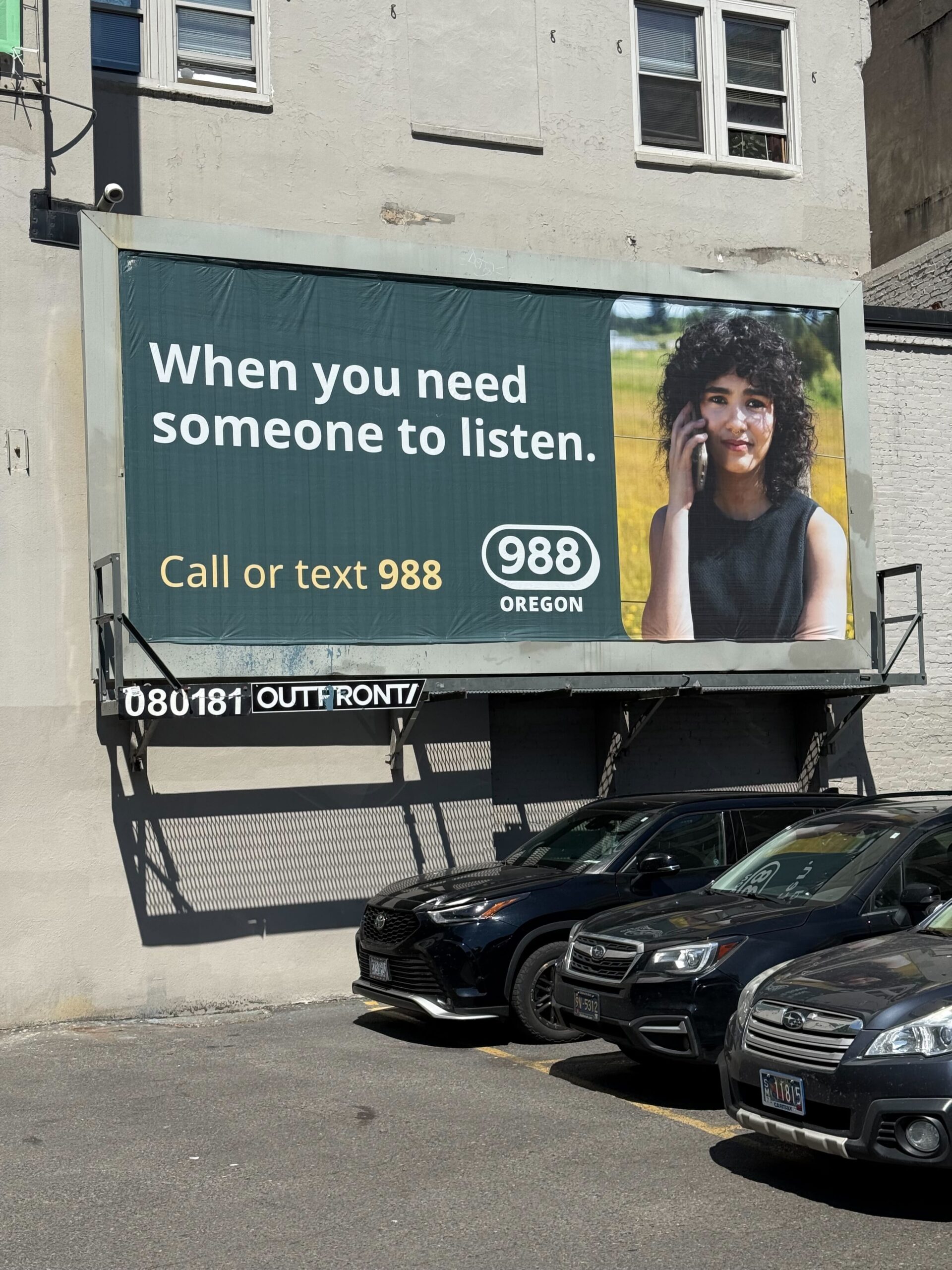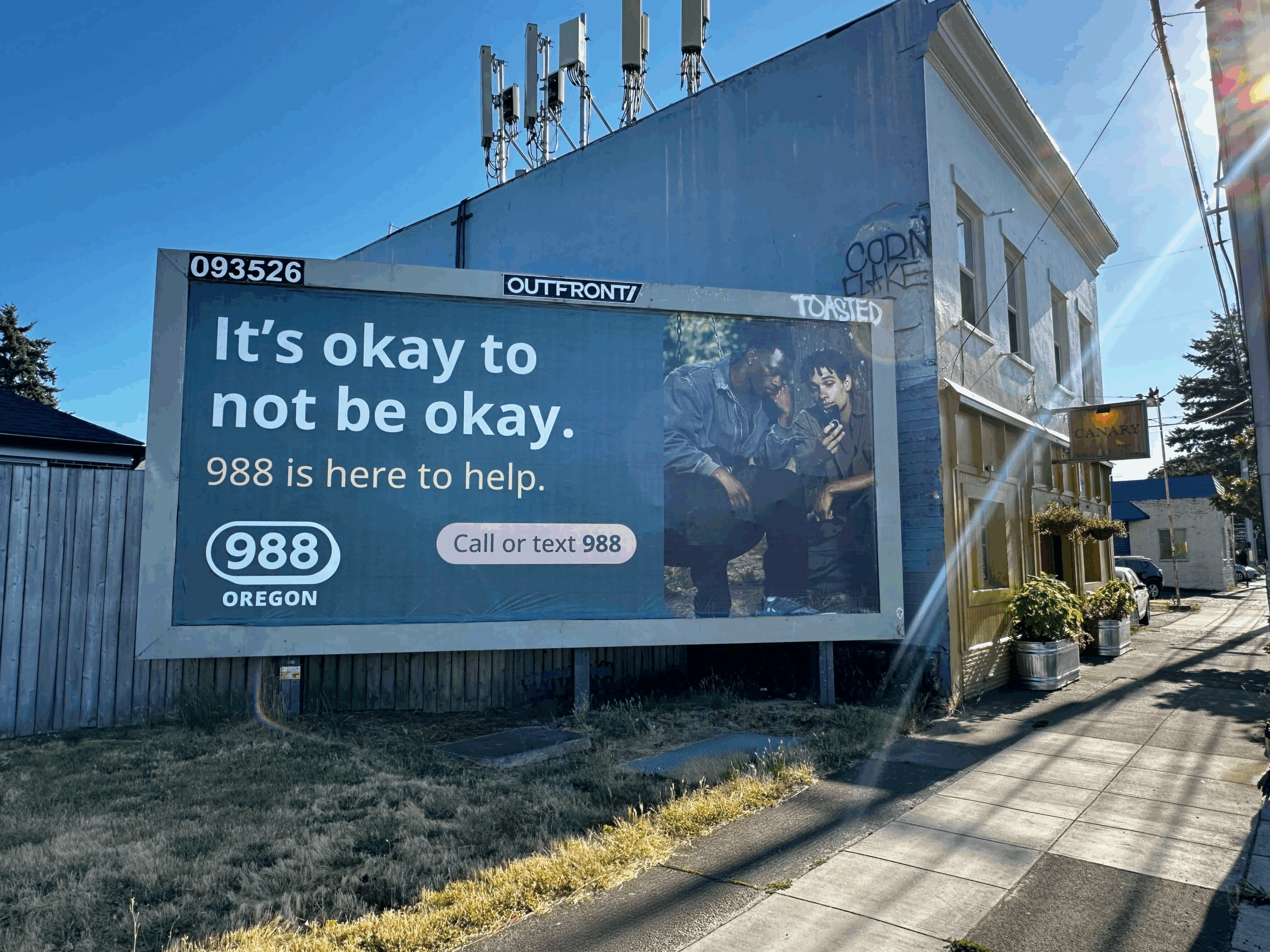When life feels overwhelming, where do you turn? Last year, few people in Oregon would have said 988, the three-digit number formerly known as the National Suicide and Prevention Lifeline. A statewide survey at the time found only 21% of a random sample of Oregonians were familiar with 988, and most weren’t sure what to expect if they reached out. Would their privacy be protected? Were their struggles “serious enough” to warrant support?
These uncertainties made it clear that any campaign to raise awareness and build trust in 988 would need to be trauma-informed, hope-centered and demonstrate that this service is for everyone—not just in moments of crisis, but also for mental and emotional well-being, substance use concerns and for support when a loved one is struggling.
From the beginning, our work with Oregon Health Authority was guided by community voices. Leaders from disproportionately affected groups shared their perspectives through interviews, focus groups and standing advisory circles. Their insights made the messaging stronger, ensuring it was culturally relevant, approachable and grounded in lived experience. The creative direction emphasized privacy, counselor training and free access, while showing a variety of scenarios that reflect the diversity of Oregonians’ lived experiences and needs.
On July 16, the campaign rolled out statewide. From billboards and buses to streaming platforms, grocery store screens, radio and TV, the message is meeting people in Oregon where they live, work and unwind. By the end of the year, the 988 Oregon campaign will generate well over 100 million impressions, making it impossible to miss and easier than ever to remember.
And today, on 988 Day especially, we’re reminded why this work matters. It’s not just about awareness: it’s about connection. It’s about making sure everyone in Oregon knows that no one needs to struggle alone. Hope, and help are just three digits away.


